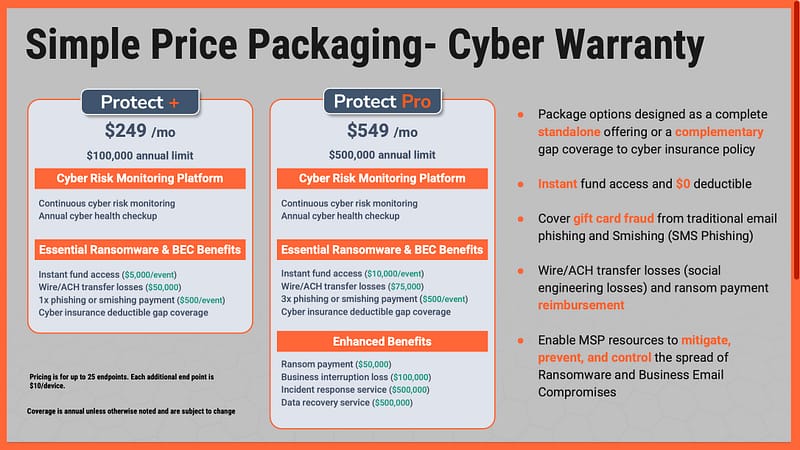Small and medium businesses (“SMEs”) must keep up with the newest technological developments if they want to compete in a market that is constantly changing.
By keeping abreast with the top trends, small businesses can identify new opportunities to streamline processes, improve efficiency, and ultimately drive growth. Being ahead of the curve means staying updated with security issues and industry threats which can help avoid major consequences to their operations and reputation.
Emerging Technology Trends
Here are emerging technologies for 2023 that small businesses should consider:
A. Artificial Intelligence (AI)
Artificial Intelligence (“AI”) is revolutionizing how small businesses operate. But adoption is varying in degrees – some take a slow, “wait-and-see” approach; but some go “all-in.” One of the biggest benefits of AI is its ability to automate manual tasks that businesses currently perform. Here are examples of how AI is being used:
- In healthcare, AI is used to help diagnose medical conditions;
- In finance, AI helps manage financial portfolios;
- In customer service, AI enables prompt answers to common inquiries, improving overall experience;
- In HR, AI may help produce policies and documents.
- In marketing, predictive analytics can offer insights into consumer behavior and market trends, leading to better choices.
By leveraging AI, small businesses can streamline their operations, increase productivity, and improve overall performance.
B. Internet of Things (IoT)
The Internet of Things (“IoT”) is a network of physical devices that use internet connectivity and sensors to communicate with each other and with devices.
For instance, IoT is now used to make intelligent appliances such as smart thermostats. Smart thermostats are capable of detecting people and adjusting the temperature up or down based on preset conditions. IoT is also used in smart refrigerators, cookers, and other appliances to use less electricity and cut down utility costs.
IoT is also used by retailers by giving customers IoT navigation devices. These devices use augmented reality and magnetic positioning to significantly reduce how much time customers take to find what they need.
IoT has enormous potential to benefit small businesses which include reducing operational costs and gaining a competitive advantage in their sector. As a business owner, you only need to think strategically about it, or get an expert IT assessment provider, to implement ideas that will work best for your business.
C. 5G Technology
5G- so named because it’s the fifth generation of wireless networking technology- could transform small businesses, drive innovation, and shape how businesses and customers interact and exchange data, thanks to speeds that are substantially better than those of the conventional 4G networks.
On the business side, 5G does not only provide faster speeds and extremely low latency but could also connect equipment that uses sensors in coordinating performance. When a machine is about to break or fail, 5G helps sensors send prescriptive messages. This saves businesses a lot of time and money.
5G enables small businesses to handle internet-enabled transactions such as online payments, stream multimedia material, and engage with clients and coworkers in real-time. One use case for example is that a mechanical arm can shut down before it hits a person or another equipment. Here, 5G is crucial because data needs to be processed within milliseconds.
To keep up with the fast-changing marketplace, small businesses must integrate 5G technology.
D. Cloud Computing
Cloud computing is a game-changer for small businesses by enabling the latter to compete with big businesses, offering businesses access to previously out-of-reach tools such as web apps and cloud storage. Its significant advantages include endless scalability, access to advanced applications, and reduction of expenses.
Now in 2023, the war is over, the cloud has won, and multicloud adoption saturated businesses. But because of its rapid rise during the pandemic, many businesses made major moves without planning. And since guidelines are relatively new and evolving, many businesses end up losing money and migrating back to buying expensive data centers.
However, without expert IT advisors’ guidance and assessment, the cloud would become frustrating.
E. Virtual and Augmented Reality (VR/AR)
Virtual and augmented reality (VR/AR) are promising technologies that have the potential to completely transform many different industries.
AR enriches the real environment by layering digital content on top of it, whereas VR creates a virtual world that is entirely immersive. This can be used to improve consumer experiences, boost productivity, and cut costs across a variety of industries, including retail, tourism, manufacturing, education, and healthcare.
For instance, virtual reality (VR) can be utilized in retail to give customers a virtual try-on experience. In education, it can give students hands-on, interactive learning opportunities.
Apple is expected to release a wearable AR/VR headset by 2023 and the content will be focused on gaming, streaming video, and video conferencing.
Small businesses that adopt VR/AR can stay ahead of the curve and set themselves apart from their competition by providing a unique and cutting-edge customer experience.
Strategies for Maximizing Technology Trends in 2023
To succeed in 2023, small business must not be left behind on the latest businesses technology. This is because technology creates new solutions and consequently wipes out businesses that are hesitate to adopt them. Some notable examples are Netflix wiping out the video-rental business, smartphones substantially wiping out the photo film industry, and AirB’n’B disrupting tourism.
On top of the benefits of each emerging technology, innovation helps you:
- Attract top talent;
- Tap new markets; and
- Enhance customer satisfaction.
Innovation includes assessing, adopting, and maximizing emerging technology trends which the big names in technology are also doing. Innovation is key to success, but only if such innovation is done with proper guidance. Without an expert guide, one may end up in frustration. It is important to continuously work with IT consultants to go through every step of the following processes.
(1) Assessing the current technology landscape
To assess current technology, small business owners can:
- attend industry events and conferences;
- follow relevant technology, publications, and blogs;
- monitor the adoption and usage of new technologies by competitors;
- conduct regular market research; and
- keep an eye on emerging technology startups.
Assessing helps small business owners make informed decisions on which technology trends are worth investing in to maximize their long-term growth and success.
(2) Evaluating the current technology infrastructure of the small business
After evaluating current technology trends, evaluating your business’ data and infrastructure is crucial. Adopting trends requires updated data and robust infrastructure. Could you determine whether you have the necessary data and infrastructure to support them?
(3) Testing and selecting
Testing, and selecting the most suitable emerging technology for a small business is crucial to its success. This process involves thoroughly evaluating the current technology infrastructure and considering factors such as the company’s goals, budget, and industry demands to ensure the chosen technology aligns with the business’s overall strategy and is able to provide maximum benefits.
(4) Adoption
Adoption of technology solutions is hard. Many businesses fail because they get out of their area of expertise to adopt a new innovation, only to find they lack the competence and ability to sustain it. Innovation involves not only selecting the most suitable solution but also effectively implementing it within the organization. This includes proper training, integration with existing systems, and effective management and maintenance of the technology over time.
(5) Proper Training
Technology adoption must organize job descriptions and workplace that facilitate proper training and periodically test tools to ensure they do not create a disparate impact.
Proper training is a major way of supporting SMEs and it is not purely a government responsibility. Large corporations also play an important part, especially in providing training around digitalization and unlocking financing. Proper training ensures that employees are comfortable and confident with the new technology.
(6) Measuring Success and Continuously Improving
Measuring your success means that setting your key performance indicators (KPIs) early, and examining and reevaluating them often to see if your technology adoption is reaching your business objectives. Then, continuously improve the strategy based on KPIs and feedback.
Conclusion
In 2023, it is important for SMEs to consider and maximize emerging technologies to stay ahead of the game. Such technologies include AI, IoT, 5G, cloud computing, and VR/AR.
But technology adoption must be done carefully. Hence, strong partnerships and collaborations with technology providers can help businesses access a wide range of expertise, identify the most suitable technology solutions, and ensure effective implementation, leading to better growth and competitiveness in the marketplace.
Make sure your small business stays ahead of the curve as technology advances. Contact a professional IT provider right away to begin investigating the newest technological advancements that will help your company expand and succeed.















